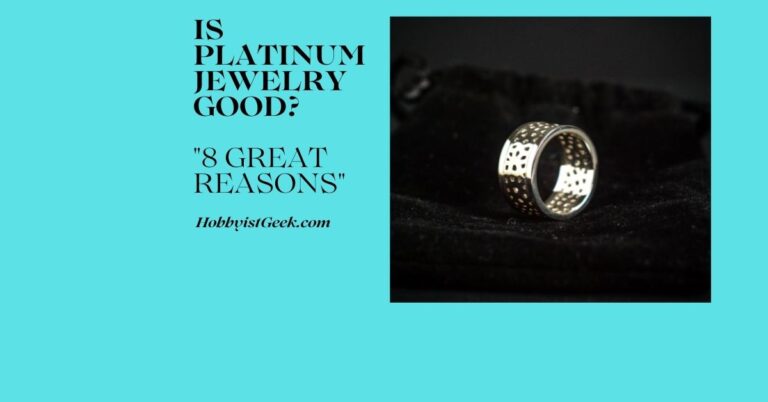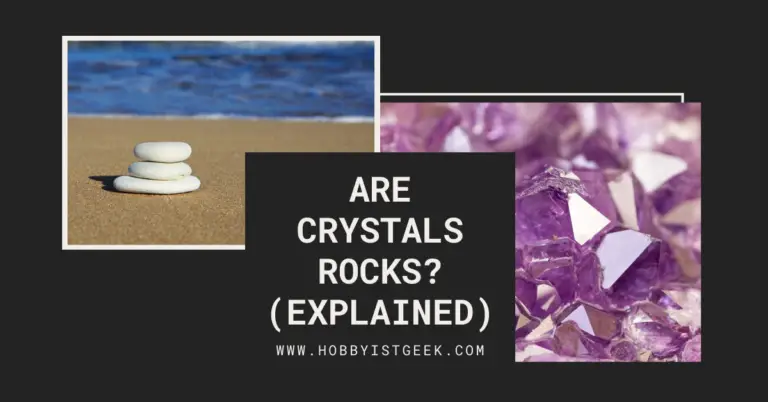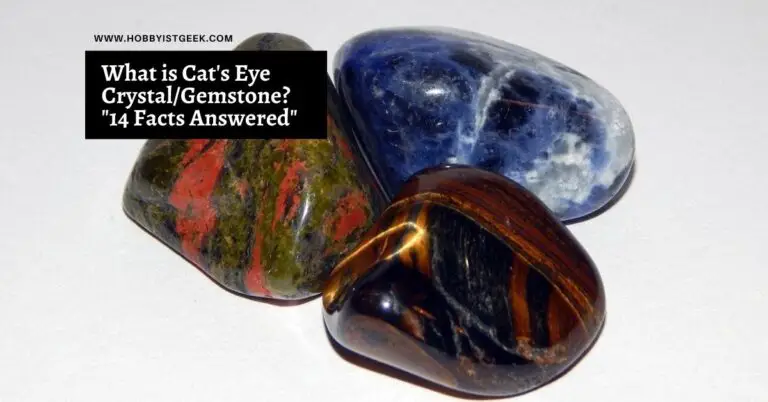Rhinestones What Are They? “Diamond Or Imposter”
Rhinestones What Are They “Diamond Or Imposter” find out the many differences between diamonds and rhinestones.
Rhinestones are decorative stones that come in different shapes and colors.
They were first used as imitation diamonds, but today they can be made from various materials such as glass, plastic, or crystals.
They are primarily used in clothing to create beautiful designs and patterns in different shapes and sizes.
Let’s find more about them!
In this article “Rhinestones What Are They “Diamond Or Imposter” Let’s find out… Yes, rhinestones are not diamonds but they look very much alike to the naked eye.
When you use rhinestones on your clothes or clothing accessory’s you’re looking at an imitation gemstone/diamond that could be made of crystal, glass plastic, and even acrylic.

Rhinestones What Are They?
Rhinestones are now primarily used in the form of beads and other jewelry.
They originated to enhance rock crystal, which is found on beaches and other sources all around Europe but particularly near places like Rhine River Valley, where it gets its name.
Today you can get them in many colors and shapes, and they are made from glass, plastic, and crystals. Well, they are a great way to add some sparkle to your clothing and accessories.
Why Are Rhinestones Called Rhinestones?
The Rhinestones got their name from the Rhine River Valley in Europe. Rhinestones are often referred to as Rhinestones as it is the name of a river in Europe where these stones were first discovered and used.
BEGINNER FRIENDLY INFORMATION ABOUT RHINESTONES
Where Do Rhinestones Come From?
Most Rhinestones are not natural today. The history of the rhinestone is as old as time itself. Initially, these stones were gathered from rivers in Europe and Asia.
Still, today they’re only found on Earth because Georg Friedrich Strass believed that imitation diamonds could be created by coating lower lead glass with metal powder to create a sparkling.
Where Are Rhinestones Made?
Today, rhinestones are created in Austria, the Czech Republic, Germany, and the outskirts of Asia. They first appeared as a decoration for royal garments in 500 AD, to make them glitter more brightly during coronations.
How Do You Take Care of Rhinestones?
Rhinestones are delicate, so to keep your rhinestones looking like new, you must take care of them!
If they have been out in the sun for too long or if there’s makeup on your fingers when handling them, then be sure to gently brush off any particles with mild soap and water before placing them back into the jewelry box.
Can Rhinestones Be Cleaned?
Yes, they can, and here is the best way to clean this without damaging them.
- Spray glass cleaner (ammonia) on the piece.
- Gentilly cleans your piece with a microfiber cloth.
- Take precaution’s not to damage the prongs.
The metal coating on the backside of rhinestones allows them to shine like diamonds. So, do not get the back of the rhinestone wet as this could ruin the foil backing.
You may also use soft, dry makeup brushes, but be careful as bits of debris can scratch stones that are not made from glass!
Since one component in rhinestone pieces might get dirty and need cleaning every now again, it makes sense to try using some kind of glass cleaner, depending upon what works best for you.
Can Rhinestones Have Color?
Who says you can only get color rhinestones in the traditional black and white? With these unique options, there’s no limit on what style of sparkling gems your next project will be.
Get sparkly pearls for an elegant look or animal prints made just right so everyone knows where their heart belongs!
Different Color Effects for Colored Rhinestones
Rhinestones, which are glass beads or stones with a metallic coating to give them sparkle, come in various colors.
The colors are usually achieved by adding different elements to the glass during the manufacturing process. The most popular colors in this gemstone are red, blue, green, and clear.
What Colors Do Rhinestones Come In?
Rhinestones are beautiful stones that can Range from Clear to Purple. The most popular type is Light-colored with red hues in it, and this colorfully deserves its category called “Aquamarine.”
Can Rhinestones Change Color?
When Rhinestones are exposed to sunlight (UV), they can change color. This color change is permanent, and the rhinestone will no longer return to its original color.
The different colors result from the rhinestone being treated with other metals and elements during the manufacturing process.
For example, a Rhinestone treated with gold will change to a pinkish color when exposed to sunlight.
Rhinestones that are treated with silver will turn green when exposed to sunlight. Rhinestones that are not treated (crystal clear Rhinestones) will not change color.
What Makes Rhinestones Shiny?
Rhinestones get their shine from a metallic coating applied to the back of the rhinestone. This metallic coating can be of various colors, but gold and silver’s most popular colors.
When the rhinestone is hit with light, the metallic coating reflects the light and creates the sparkle we all love!
Why Are My Rhinestones Cloudy?
A cloudy or milky Rhinestone in appearance typically means it has lost its coating. Rhinestones are usually treated with a metallic coating (gold or silver) to give them their sparkle.
If a Rhinestone loses this coating, it will become cloudy, and you will not be able to see the rhinestone’s sparkle.
If your Rhinestones become cloudy, one option is to spray the rhinestone with a clear sealer. This will protect the rhinestone, and it should no longer lose its coating.

What Are Black Rhinestones Called?
Black Rhinestones are called “Onyx Rhinestones.” Onyx Rhinestones are Rhinestones that are made from glass that has been dyed black. They are also treated with a metallic coating that gives them the sparkle that Rhinestones are known for!
Why Do Rhinestones Turn Black?
Rhinestones turn black when they lose their metallic coating. Rhinestones are typically treated with a metallic coating (gold or silver) to give them their sparkle.
Rhinestones will become opaque when they lose this coating. Rhinestones can return to their original color by treating a new metallic layer.
How Do I Clean My Rhinestones?
Rhinestones can be cleaned using a soft cloth and a gentle detergent or soap. Be sure to avoid harsh chemicals or solvents as these could damage the rhinestone’s coating.
If the rhinestone is still cloudy after being cleaned, you can use a Rhinestone Pick-Up Tool to press the Rhinestones back into their original position.
What Is a Yellow Rhinestone Called?
Yellow Rhinestones are called “Siam Rhinestones.” Siam Rhinestones are Rhinestones that are made with glass that has been dyed yellow.
They are also treated with a metallic coating that gives them the sparkle that Rhinestones are known for!
Why Do Rhinestones Turn Yellow?
Rhinestones turn yellow when they lose their metallic coating. Rhinestones are typically treated with a metallic coating (gold or silver) to give them their sparkle.
Rhinestones will become opaque when they lose this coating. Rhinestones can return to their original color by treating a new metallic coating.
What Does the Blue Rhinestone Mean?
The blue rhinestone is the most popular Rhinestone color. Each of them has got many different meanings, depending on the culture.
In the United States, blue Rhinestones could mean peace. In China, Rhinestones symbolize happiness. Blue Rhinestones are often seen in bridal Rhinestone designs, as well.
Do Rhinestones Sparkle?
Yes! Rhinestones get their sparkle from a metallic coating applied to the back of the rhinestone.
This metallic coating can be a variety of colors, but the most popular colors are gold and silver. Rhinestones will sparkle when they catch the light because of this metallic coating.
Rhinestones get their shine from a metallic coating applied to the back of the rhinestone.
Rhinestones can have various colors for this coating, with the most popular color being gold or silver.
Rhinestones will sparkle when they catch the light because of this metallic coating. Rhinestones can lose their coating if they become cloudy, resulting in no longer seeing rhinestones’ sparkle.
Rhinestones can be cleaned with a soft cloth and gentle detergent or soap, but harsh chemicals or solvents should be avoided as they may damage rhinestone’s coating.
How Are Rhinestones Measured?
Rhinestones are typically measured in millimeters. This is the size of the rhinestone about the other Rhinestones around it.
Rhinestones are measured in millimeters to express the extent of rhinestones they refer to.
The number of rhinestones can also be measured by points, which refers to how many on one rhinestone. Rhinestones with more points will sparkle brighter than Rhinestones with fewer points.
What Does the Red Rhinestone Mean?
The red rhinestone is the second most popular Rhinestone color.
It has many different meanings, depending on the culture. In the United States, red Rhinestones could mean love or passion. In China, Rhinestones symbolize good luck.
Red Rhinestones are often seen in bridal Rhinestone designs, as well.
Are Swarovski crystals rhinestones?
Swarovski crystals are not Rhinestones. Swarovski crystals are a type of crystal that is used in Rhinestone designs.
Rhinestones and Swarovski crystals can be used together in Rhinestone designs, as Rhinestones give the design additional shine. jewelry, furniture pieces like bookcases or desktops in schools – even windows!
Why Are Rhinestones So Popular?
Rhinestones have been a part of many cultures throughout history. They’re now found worldwide and can be seen on everything from clothes to jewelry, furniture pieces like bookcases or desktops in schools – even windows!
It’s interesting how they come together beautifully despite their very different origins. Some originated as imitation gems made out of crystal glass.
In contrast, others are fashioned after natural gems such as diamonds (though these days, you’ll find them more often under magnification).
The word “rhinestone” itself seems an appropriate moniker given its meaning which refers to both.
Rhinestones vs. Pearls: What’s the difference?
How to identify rhinestones vs. pearls? Rhinestones are usually a lot smaller than pearls. Rhinestones are also transparent, while pearls are not.
Pearls are also usually round, while Rhinestones can be square, rectangle, or other shapes. Finally, Rhinestones have a metallic coating on the back, while pearls do not.
Rhinestones are usually attached to surfaces with glue/heat, while Rhinestone pearls could be sewn on.
Rhinestones can also be found in nearly any color one can imagine, whereas pearls typically come in white and cream colors only.
Final Thoughts On… Rhinestones What Are They “Diamond Or Imposter”
Now that you’ve gotten to know Rhinestones a little better, what do Rhinestones mean to you?
Rhinestones are pretty famous for their sparkle and shine, but they also have a variety of meanings, depending on the culture.
They can be used in several different designs to give extra shine and bling.
If you liked Rhinestones What Are They “Diamond Or Imposter” you will love and learn lots! What Are Hotfix Rhinestones? “22 Facts Answered”
Frequently Asked Questions On… Rhinestones What Are They? “Diamond Or Imposter”
Rhinestones vs. crystals: What’s the difference?
Rhinestones and crystals share very few similarities. While Rhinestones are usually glass or acrylic, crystals are minerals that are formed into many different shapes. Rhinestones are also flatback with a transparent coating applied to the back.
Our Swarovski crystals rhinestones?
Swarovski crystals are not Rhinestones. Swarovski crystals are a type of crystal that is used in Rhinestone designs. Rhinestones and Swarovski crystals can be used together in Rhinestone designs, as Rhinestones give the design additional shine.
How did Rhinestones originate?
Rhinestones were initially made from Rhinestone glass, a type of cut glass. Rhinestones were later introduced in the 1930s and were inspired by diamond-studded clothing worn by European royalty.
What are Rhinestones used for?
holes in an object like fabric, imitate other gemstones, and more. Rhinestones can also decorate various surfaces, including clothes, jewelry, furniture pieces like bookcases or desktops in schools – even windows!



Sources
https://en.wikipedia.org/wiki/Rhinestone
https://rhinestonesu.com/blog/why-are-rhinestones-called-rhinestones/
https://www.sunmeibutton.com/what-is-a-rhinestone/
https://www.sunmeibutton.com/color-rhinestones/
https://www.antique-jewelry-investor.com/history-of-rhinestones.html
https://oureverydaylife.com/glass-vs-crystal-rhinestones-12328802.html
https://www.romadesignerjewelry.com/blogs/education/what-are-swarovski-crystals-made-of
https://www.rhinestonesupply.com/faq.php
https://www.wikihow.com/Wash-Rhinestone-Clothing
https://www.rhinestoneguy.com/faq.html
https://worthofbest.com/blogs/knowledge-base/rhinestone-colors
https://www.rhinestonebiz.com/t-rhinestone-basics.aspx
https://www.rhinestoneguy.com/HowToMakeHeatTransfers.html
https://community.etsy.com/t5/Creative-Process/Clear-rhinestones-yellowing-why/td-p/125368382
https://www.rhinestoneguy.com/allaboutrhinestones.html
http://www.differencebetween.net/object/difference-between-crystal-and-rhinestone/
- Evil Eye Hand: Unveiling the Mystical Origins and Meanings - February 2, 2024
- Amegreen Amethyst Meaning: Discover the Hidden Magic! - February 2, 2024
- Is The Evil Eye Bad?: A Deep Dive into Evil Eye Taboos - February 2, 2024








